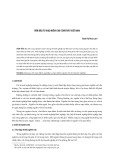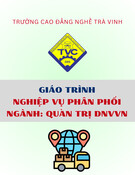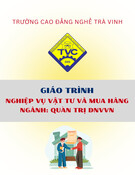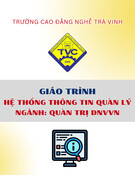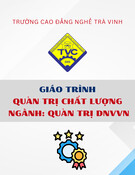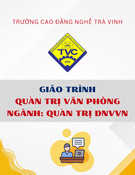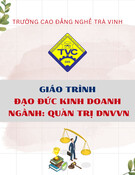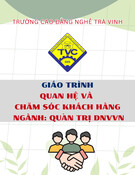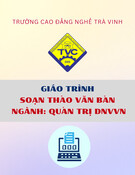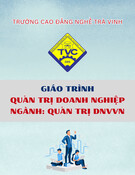
http://www.iaeme.com/IJM/index.asp 16 editor@iaeme.com
International Journal of Management (IJM)
Volume 9, Issue 2, March–April 2018, pp. 16–30, Article ID: IJM_09_02_002
Available online at
http://www.iaeme.com/ijm/issues.asp?JType=IJM&VType=9&IType=2
Journal Impact Factor (2016): 8.1920 (Calculated by GISI) www.jifactor.com
ISSN Print: 0976-6502 and ISSN Online: 0976-6510
© IAEME Publication
AN EMPIRICAL ANALYSIS ON THE IMPACT
OF CAPITAL STRUCTURE DETRIMENTS ON
PROFITABILITY OF FIRM: A CASE ON LISTED
IT COMPANIES IN INDIA
Dr. Sudhendu Giri
Deputy Dean and Professor of Finance,
Maharshi Law School, Maharshi University of Information and Technology, Noida, India
ABSTRACT
To operate efficiently firms are free to raise equity or debt or any combination of
two to optimally manage the financing of its assets. Because of tax advantage and as a
cheaper source of finance Debt component is very often preferred and given a
significant proportion in determining the capital structure of the firm. In present study
we are mainly focusing on the analysis that whether or not capital structure has any
impact over the profitability of Listed IT companies in Indian market. Through the
present elaborated we are trying to establish the relationship between capstr(capital
structure) and profitability and its effects on business revenue also. For a more
purposeful analysis, selected firms are grouped under three categories on the basis of
two attributes i.e revenue earned by business and firms’ assets size. At the very first
stage, firms are grouped into low, medium and large on the basis of their respective
assets size to test the hypothesis established that capstr has a significant impact on
selected profitability measures of listed IT companies in India. For the purpose of our
analytical study we choose a sample size of 96 IT companies through multi stage
sampling technique for 10 years of data sets ranging from 2007 to 2017 for analysis
purpose. Two dependent variables and four independent variables with one controlled
variable are taken under consideration for analysis using regression. We used
descriptive statistics such as Mean, S.D. and Ratio along with the techniques such as
Pearson Coefficient of Correlation, which is primarily used for testing the relationship
between capstr variables and profitability measures under scope of our study along
the side we also used Regression analysis(OLS Model) to test the unidentified impact
of capstr on profitability variables under scope. The use of correlation tools are
mainly done for the purpose of finding out multicolinearity among independent
variables to decide that what variables can further be tested in our regression models.
The study proves the relationship of capstr variables and profitability variables with
the help of analysis that capital structure has significantly influenced the profitability
of the firms and a substantial increase in debt component in capital structure leads to
a decrease in Net Profit of Listed IT companies in Indian market.

An Empirical Analysis on the Impact of Capital Structure Detriments on Profitability of Firm: A Case on Listed
IT Companies in India
http://www.iaeme.com/IJM/index.asp 17 editor@iaeme.com
Key words: Capital Structure, Determinant, Profitability, Impact, Ratios.
Cite this Article: Dr. Sudhendu Giri, An Empirical Analysis on the Impact of Capital
Structure Detriments on Profitability of Firm: A Case on Listed IT Companies in
India. International Journal of Management, 9 (2), 2018, pp. 16–30.
http://www.iaeme.com/IJM/issues.asp?JType=IJM&VType=9&IType=2
1. INTRODUCTION
The financing pattern of a firm and its associated component cost presents different dynamic
dimensions of the competition between firms and an essential part of firms capital structure
decision to maximize its market value and growth to shareholders‘ investment. Capital
structure strongly deals with the long term mode of finance to generate sound results pertinent
for its value maximization. The debt to equity ratio reflects the two components of capital
structure viz. debt and equity. For our clear understanding there is a difference between
capital structure and finance structure, which besides long term debt also includes short term
debts(Nistor,2004). Investment opportunities have broadly expanded with liberalization and
globalization of world economies and also the investment opportunities and financing options,
and reason being the dependence of Capital Markets witnessed an unprecedented increase.
Every firm requires capital to establish and more of it requires if it wants to grow. The sources
of this capital can be different that suits to the need of the firm. They can use either equity of
debt or any combination of the two in any proportion which yields the maximum value to
shareholders. The issue regarding the best capital structure(debt-equity mix) is the most
perplexing issue in the life of a finance manager. The debt is considered irrelevant in the firms
capital structure if it is based on critical assumption of non existence of corporate taxes. But
corporate taxes do exist and interest of debentures is treated as allowed expenditure which
yields higher returns to a levered firm and the reason one can conclude on a general term that
levered firms are valued more than an unlevered firm because of tax saving on interest paid
on debt and the fact alone makes debt advantageous over equity. The firms‘ market value
increases with its debt proportion in capital structure that makes a levered firm more valuable
over unlevered firms.
The seminal work on the subject by Modigliani and Miller(1958,1963)dicussed the
determinants of capital structure- whether interest on debt is tax deductible or not, was a
pioneering work. If consider the non tax deductibility of Debt-Interest, the firm owners will
be indifferent between the use of equity and debtors as they will yield the same thing to firm.
But on the other hand where tax deductibility is considered, the market value of the firm can
be maximized upto 100 percent by employing 100 percent debt financing. Despite the fact
that Debt Interest is tax deductible, the use of debt component, in capital structure of firms
varies in all firms, which gives rise to a new puzzle that what determines capital structure and
what should be ideal debt ratio for firms. In last couple of years, the demarcation line has been
created between small firms and large firms and recognition that former has different aspects
regarding their capital structure than to later. One thing which is clearly observed in
determining the capityal structure is level of risk attached with debt component, the higher the
debt, the greater the risk and the interest rates but at the same time this increased tax rate also
provides higher tax advantage to the firm in the form of tax saving. But contrarily, if firms do
not have sufficient operating profit in any of coming year, the firm can go up in bankruptcy.
The paper of Modigliani and Miller(1958) founded the approach for modern theory of
capital structure presenting a view that Capital Structure can be irrelevant under what
circumstances and since then many other economist also followed the same view which
Modigliani and Miller followed. Some other recent studies include Taggard(1977),

Dr. Sudhendu Giri
http://www.iaeme.com/IJM/index.asp 18 editor@iaeme.com
Masulis(1983), Ravid(1988) and Allen(1991), comment by Bhattacharya(1979) on
Miller(1977), Modigliani(1982),Ross(1977) and Stiglitz(1974) and Masulis(1980) are all that
includes general survey studies. Jensen and Meckling(1976) was the initiative in this area
which was build on an earlier research work of Fama and Miller(1972). It has been proven
empirically that profitability of firms in concentrated sector firms are totally different from the
level of firms that are in competitive business.
2. STATEMENT OF PROBLEM, IT’S SIGNIFICANCE AND SCOPE
In the present paper the impact of capital structure on profitability of Indian firms is analyzed.
While determining the profitability of Indian firms two important factors viz. assets size and
business revenue are considered important determinant. In Indian context, only few studies so
far, have analyzed the size and revenue and its analytical impact on profitability of the Indian
firms. The present study is formulated after categorizing the selected Indian IT Firms into
three different categories which are further based on two attributes. After very first, firms are
classifieds on the basis of revenue i.e. total income as low, medium and high income groups
and secondly they are classified on the basis of asset size into small, medium and large to
formulate the hypothetical relationship that capstr has significant impact on the profitability of
selected IT companies listed in Indian Stock Market.
In spite of the fact that many research studies have been undertaken on the subject of
capital structure, there are a few which focuses on relationship between capstr and
profitability. Thus the present attempt is a maiden attempt to analyze the profitability of
selected Indian IT companies and the relationship amongst grouped firms in terms of their
capital structure and their profitability.
The present paper is attempted to conduct an empirical study to the hypothesis that there is
a relationship exist between capstr and profitability.
3. OBJECTIVES AND HYPOTHESIS
The present empirical paper is aimed
To analyze the factors determining capstr of Indian IT firms listed on BSE on the basis of their
respective size and total income groups.
To analyze the interrelationship of firms‘ capital structure and their profitability based on the
two attributes viz. assets size and revenue.
H01 The selected capstr variables and Return on Assets variable of all three different Income
group IT firms viz. Low Income IT firms, Medium Income IT firms and High Income IT
firms do not have any significant relationship.
H02 The selected capstr variables and Return on Assets variable of all three business size IT
firms viz Small size IT firms, Medium size IT firms and Large size IT firms do not have any
significant relationship.
H03 The selected capstr variables and Return on Capital Employed variable of all three
different Income group IT firms viz. Low Income IT firms, Medium Income IT firms and
High Income It firms do not have any significant relationship.
H04 The selected capstr variables and Return on Capital Employed variable of all three
business size IT firms viz. Small size IT firms, Medium size IT firms and Large IT firms do
not have any significant relationship.
H05 The selected capstr variables and Return on Assets variable for overall IT companies do
not have any significant relationship.

An Empirical Analysis on the Impact of Capital Structure Detriments on Profitability of Firm: A Case on Listed
IT Companies in India
http://www.iaeme.com/IJM/index.asp 19 editor@iaeme.com
H06 The selected capstr variables and Return on Capital Employed for overall IT companies
do not have any significant relationship.
4. LITERATURE REVIEW
A Capital structure exist whenever there is a debt component exist in a firm and therefore it
can be concluded that capital structure(capstr) and debt are variables that are interlinked. The
value of debt cannot be determined easily if we do not have clear idea about the capital
structure(capstr), which in turn is useful to determine the default or bankruptcy levels, even in
turn, the capital structure can not be optimized at all if we do not know the leverage‘s impact
on final debt value. Modigliani and Miller(1958) presents clearly an overview that
admissibility of Interest as an allowed expenditure for the purpose of corporate tax creates a
good incentives to companies to increase the debt levels in their capital structure design.
Titman(1988) changed the implications when he breaks down the total debt into short term,
long term and convertible debt rather taking aggregate debt into considerations. Whereas,
Barton and Godon(1988) presented the view of managerial perspective of determining capital
structure at the determinant level of company analysis. Vogt(1994) used simultaneous
equation set to analyze the debt component the test the pecking order theory(Myers 1984).
Rajon and Zingales(1995) come to conclusion that factors identified in other previous studies
in the US are correlated similarly in other countries as well. Jenson and Meckling(1976) the
optimal capital structure is obtained by trading off the agency cost of debt against the benefit
of debt. In his research, Jenson and Mackling identified disputes between the concerns of
shareholders and managers because of the fact that managements‘ ownership being less than
100% of the equity. Jensen(1986) proposed that this problem could be sorted out by
increasing the management‘s ownership or by reducing the debt component in capital
structure. Gratom(2000) estimated tax advantage to debt component in capital structure.
Stein(2001) concluded that tax advantages increases as firm chooses to increase debt level.
Booth at al(2001) concluded that ratios pertaining to debt in developing countries have the
same implications as they have in developed countries but there are differences in the way
that these ratios are connected by country factors like, GDP growth rates, inflation rates and
capital market developments. Um(2001) stated that the static trade off theory is obtained,
where the net tax advantage of debt financing balances leverage related costs such as
bankruptcy and suggests that a high profit level gives rise to a higher debt capacity and
interest tax shield, therefor, a profitability and financial leverage is positively related. Guney
and Paudyal(2002) concluded that capital structure of companies not only affected by its own
characteristics but by other surrounding environment factors also, such as the state of the
economy, stock market and bank sector. Harris and Raviv (1990) in their research state that
the optimal structure is obtained through a trade-off between liquidation decisions and higher
investigation costs. They concluded that high leverage can be an outcome with large firm
value, lower probability of reorganization following default, and higher debt level. Stulz
(1990) stated that the optimal capital structure can be designed by a trade-off between benefit
of debt and cost of debt. His arguments were based on the fact that managers issue debt only
if they fear a takeover.Diamond (1989), and Hirschleifer and Thakor (1989) in their research
argued that the asset substitution problem (such as using debt to finance high risk projects
instead of equity) could be reduced because of the management‘s reputation being at stake.
While shareholders preferred to maximize an expected return, managers maximized the
possibility of being successful. Diamond (1989) argued that as a firm gets older, it chooses
less risky projects, thereby reducing its defaults which would lead to a lower cost of debt.
This theory suggests that younger firms will have less debt than older ones. The size of
companies is another feature that may influence the companies‘ capital structure. According
to Titman and Wessels (1988), size of companies is positively related to debt. Since then,

Dr. Sudhendu Giri
http://www.iaeme.com/IJM/index.asp 20 editor@iaeme.com
extensive research work has been developed over this topic and the consensus is that SMEs
are expected to show a positive relationship between size and LTD, but a negative one with
STD (e.g. Michaelas et al., 1999; Hall et al., 2000; Esperança et al., 2003; Vieira and Novo,
2010). Warner (1977) said that a large company has lower transactions costs of financing
externally than a small company, making it harder for the small companies to access debt and
keeping them away from outside financing. In general, large companies follow a strategy of
diversified business, enabling them to have stable earnings reducing the risk of bankruptcy
and contributing to meet their debt obligations (Warner, 1977; Marsh, 1982). Moreover,
SMEs are averse to risk because they are less leveraged and prefer to use more self-financing
(Gallo and Vilaseca, 1996). According to GABA, D., & GARG, R. (2012), the effect of
different company specific variables includes asset composition, business risk, size, debt
service capacity, growth rate and earning rate on the capital structure of selected variables.
Regression results revealed that asset composition, business risk and debt service capacity are
significant factors in context of automobile industry. According to Ashraf, T., & Rasool, S.
(2013), Out of 7 variables only 3 are significant (Size, tangibility and growth). It means that
the firms in automobile sector should keep in mind these factors because these factors
determine the leverage decision in this sector. The remaining three factors (profitability, tax,
risk and NDTS) are insignificant and do not play any role in the determination of leverage in
non-financial firms of automobile sector of Pakistan. According to Ani, M. A., & Amri, M. A.
(2015), higher fixed assets, higher risk and size encourage firms to use the debts in the capital
structure. According to Boateng, A. (2004), Firm characteristics such as size of the JV, type
of the industry have effect on the capital structure. Also the level of ownership of partners of
the JV influences the capital structure of the firm. According to Vicente-Lorente, J. (2001).
Reputational assets technological capabilities & specific human capital affect the firm‘s debt
ratio in spite of the fact that they are expected to have similar implications as intangible assets
and non debt tax shields.
Gorden (1962) observed that with the increase of size, return on investment was
negatively related to debt ratio. He also confirmed the negative association between operating
risk and debt ratio. Baxter (1967) articulated that the degree of degree of financial leverage
would depend on the variance of net operating earnings, since; business with relatively stable
income streams is comparatively least prone to bankruptcy. Hence, a negative association
exists between variance of net operating earnings and degree of financial leverage. A cross
sectional study Gupta (1969), on the financial structure of American Manufacturing
Enterprises during 1961-62 confirmed^ that total debt ratios were positively related to growth
and negatively related . ,to size. Toy et al (1974} found higher level of operating risk is
associated with higher debt ratio and growth, typically measured in terms of sales, is
negatively related to debt ratio while financial leverage is indirectly tied with return on
investment (ROI). Ferri and Jones (1979) investigated the relationship between firm's
financial structure and its industrial class, size, variability of income and operating leverage.
They found that the industry class was linked to the firm's leverage, but not in a direct manner
as was suggested in other researches. Secondly, a firm's use of debt is related to its size.
Finally, operating leverage does influence the percentage of debt in a firm's financial
structure. In the same manner, .Venkatesan (1983) analyzed the relationship between seven
variables; industry categorization, size, operating leverage, debt coverage, cash flow
coverage, business risk, growth ratio and financial structure of firms. It was observed that,
only debt coverage ratio was found to be important variable significantly affecting the
financial structure of the firm. Careltori and Siberman (1997) concluded that higher the
variability in ROI lower will be the degree of financial leverage in firms. Bradley, Jarroll and
Kim (2002} found that debt to asset ratio is negatively related to both volatility of annual










